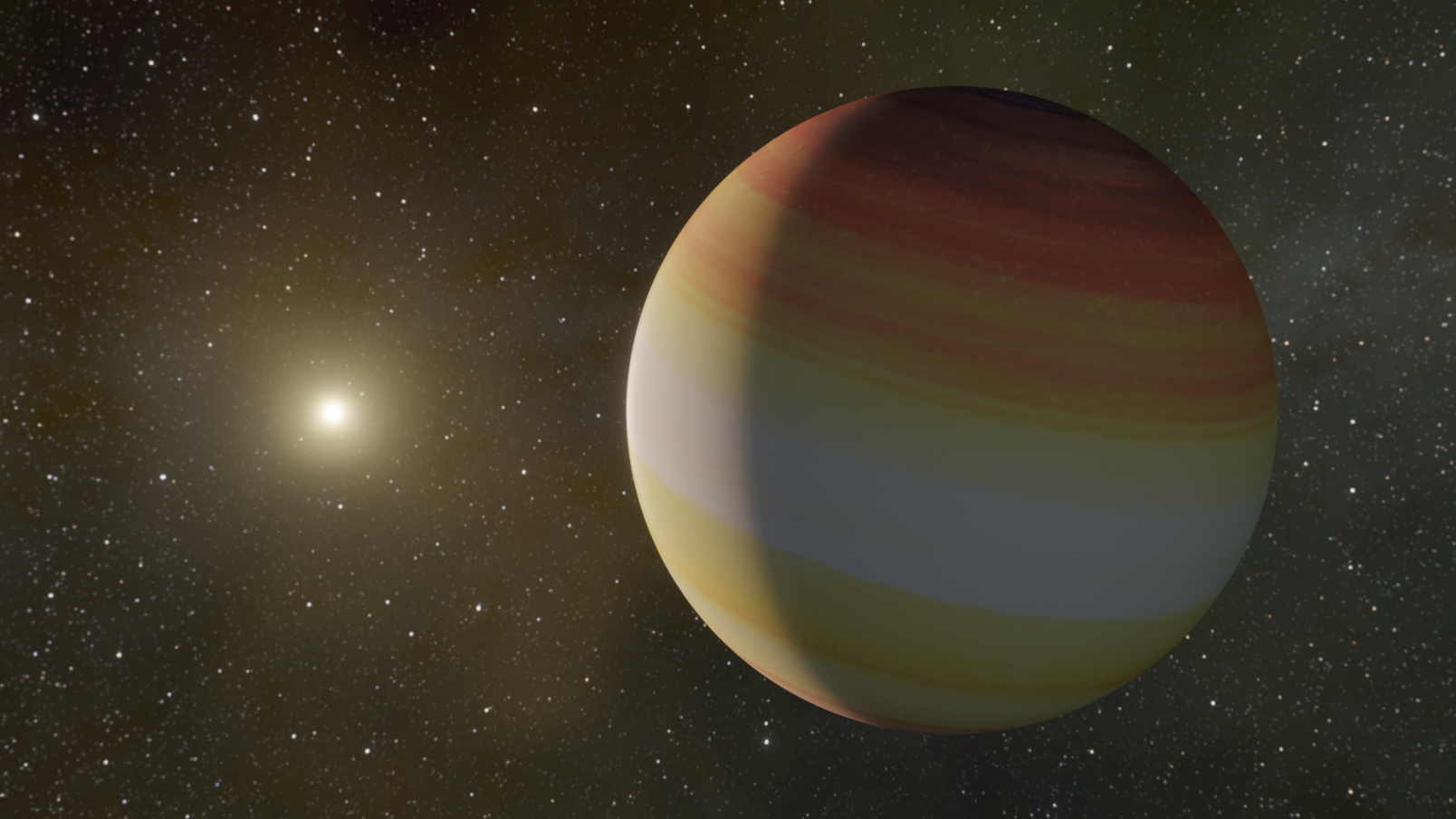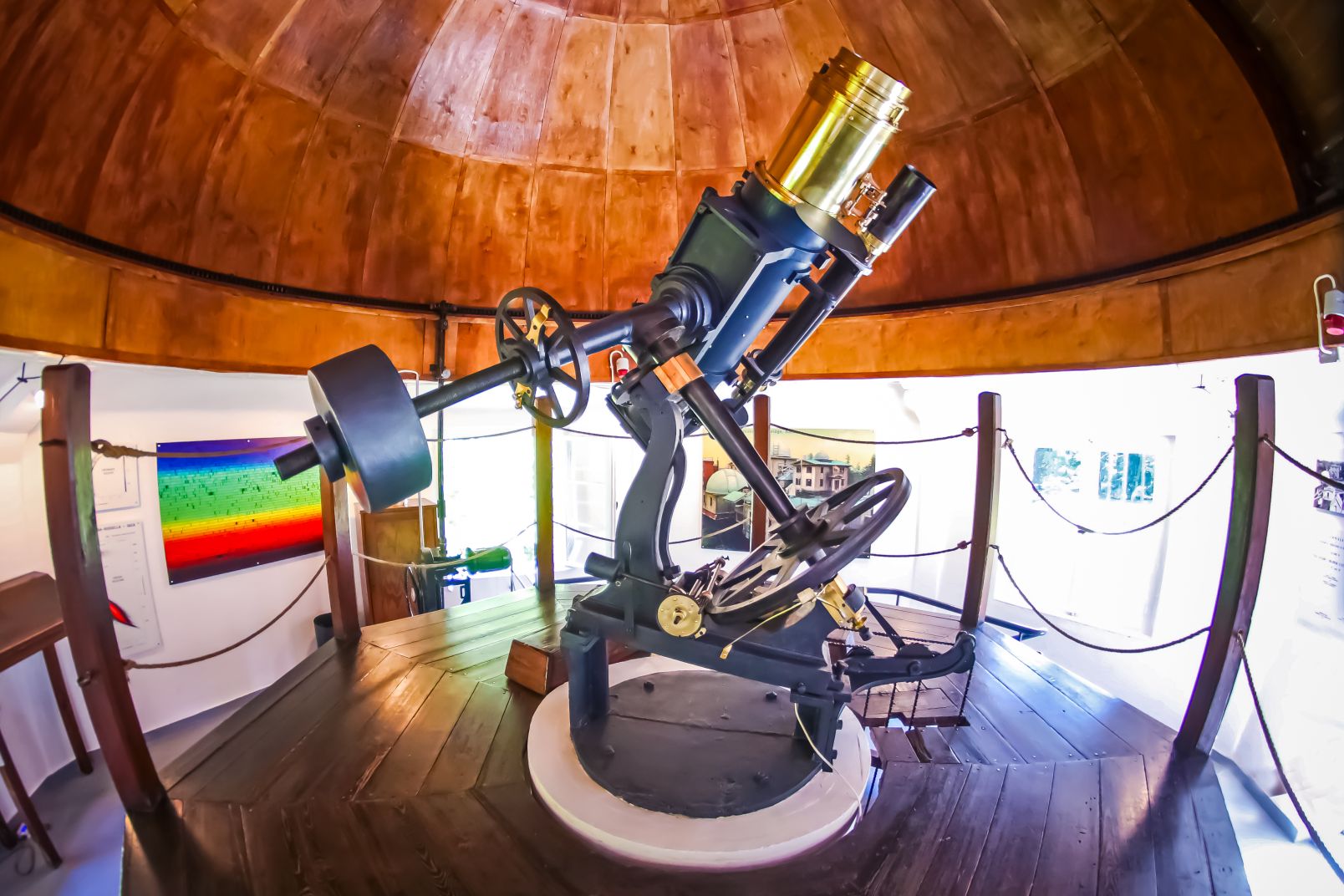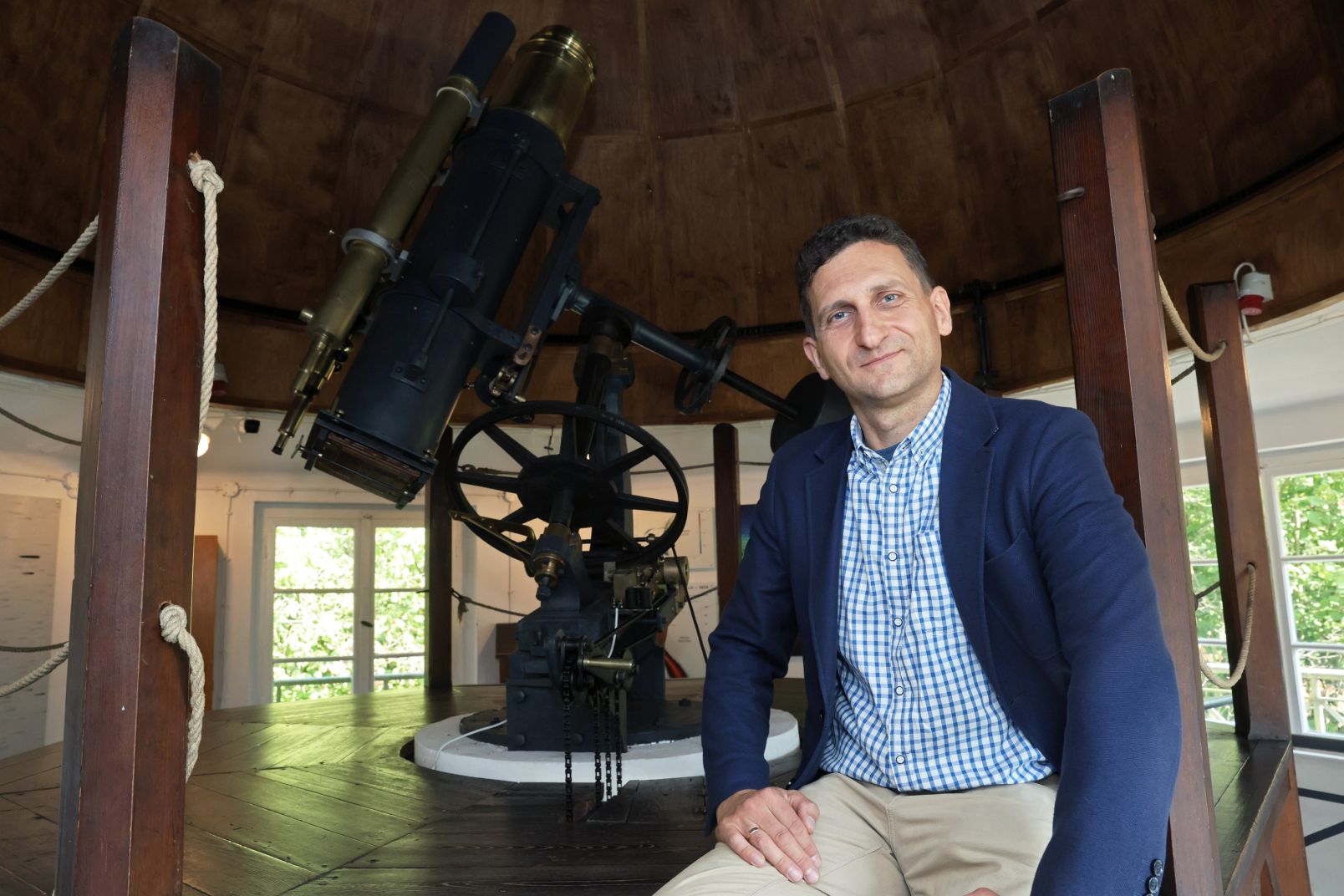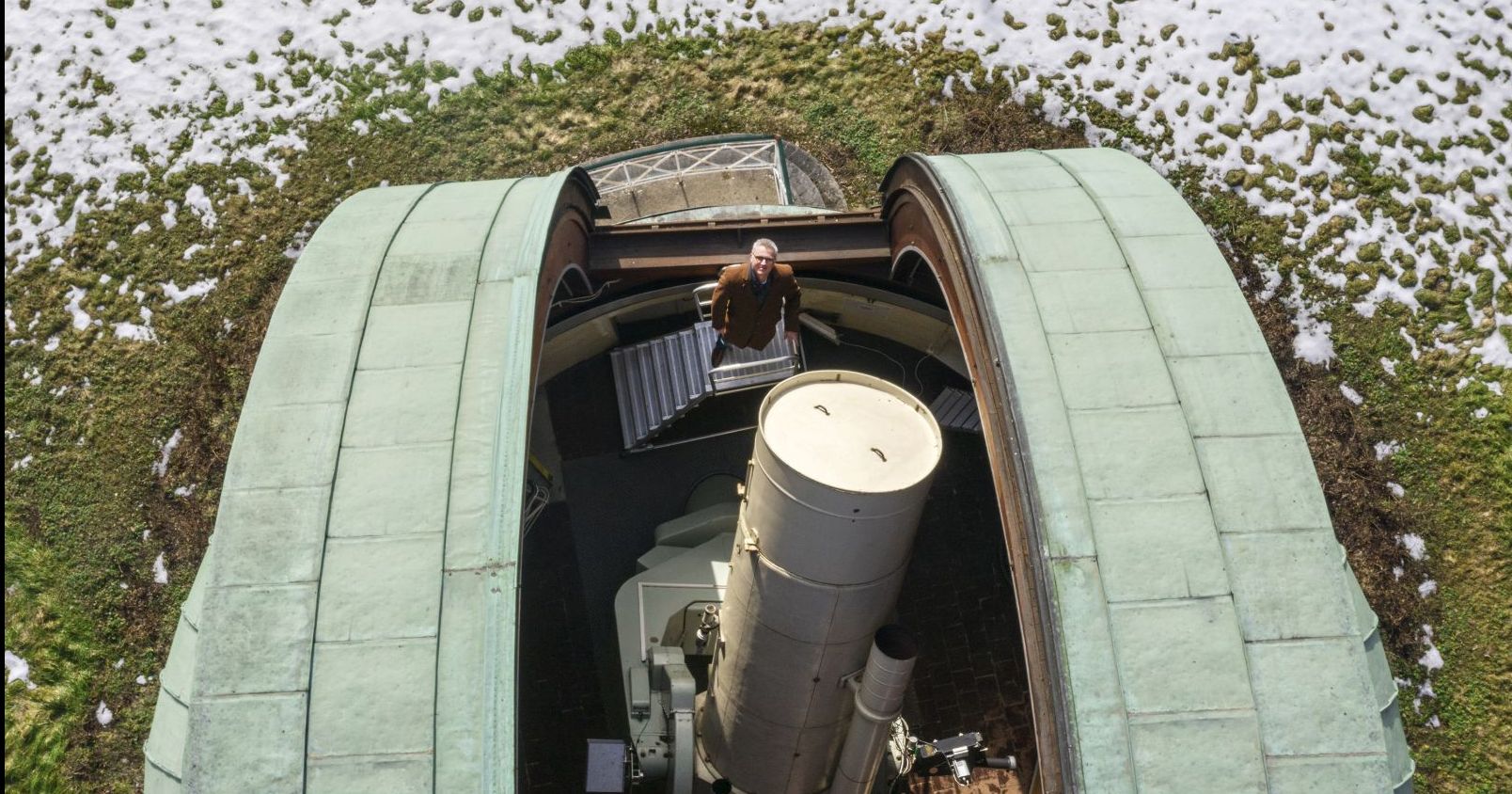 Exact sciences
Exact sciences
Super-Jupiter from the Great Bear
It has a mass as much as 11 times that of Jupiter, orbits its star in 14 years and has a temperature of no more than minus 100 degrees Celsius - astronomers from the NCU have discovered a new planet in the constellation of the Great Bear.
The scientists behind the discovery are from the Nicolaus Copernicus Univeristy Institute of Astronomy: dr habil. Gracjan Maciejewski, NCU Prof., prof. dr habil. Andrzej Niedzielski, prof. dr habil. Krzysztof Goździewski and a fifth-year astronomy student, Julia Sierzputowska. In collaboration with researchers from Spain and the United States, including Prof. Aleksander Wolszczan, they described the cosmic finding in the prestigious scientific journal "Astronomy & Astrophysics".

An inconspicuous star with a massive planet
We are dealing with an extremely massive exoplanet - as much as eleven times the mass of Jupiter, the largest planet in our Solar System. It orbits its parent star in 14 years, and is six astronomical units away from it (the astronomical unit [a.u.] is a conventional measure of distance used in astronomy, the average distance between the Earth and the Sun. It is 149,597,870.7 km. For example: The Moon is 0.026 a.u. from the Earth, while Jupiter is 5.2 a.u. from the Sun).

– We cannot see a planet, but we can spot the star around which it orbits– with a small telescope as small as 10 cm. The star's physical parameters are similar to those of the Sun. The data indicate that it is 20 percent more massive and twice as large as the Sun. Interestingly, it has already completed the stage of evolution that the Sun is currently in; it has a 5 billion years behind it. We can therefore estimate that this is also the age of the entire planetary system,' explains dr habil. Gracjan Maciejewski, NCU Prof., leader of the research group from the NCU Institute of Astronomy. – It is located on the northern side of the sky in the Great Bear constellation and bears the designation HD 118203, because it was first listed in Henry Draper's stellar catalogue under this number. The telescope used to make the observations for this catalogue more than a century ago is now located in our observatory in Piwnice, near Toruń.

The Draper telescope is one of the world's first astrographs, or photographic recorders of celestial sphere phenomena. It was built in 1891 as a 'memorial' to the prematurely deceased American spectroscopic physicist Henry Draper, with which his wife Anna Maria supported the Harvard Observatory's ambitious programme, led by Edward C. Pickering, to develop a catalogue of photographic and photovisual brightnesses of stars and their spectral classification. More than 60,000 photometric and spectral images of the sky were taken with this telescope in Cambridge, and it contributed so much to Pickering's intention that the compiled inventory containing almost a quarter of a million stars was called the Henry Draper catalogue. The 'HD' star designations are still used today and are familiar to all astronomers around the world.
How did Draper's astrograph find its way to Piwnice? In autumn 1947, the construction of the first observatory pavilion of the NCU Astronomical Observatory with a rotating dome of five metres in diameter began. Two years later, an astrograph sent from Cambridge stood there and, after the necessary adaptations, began regular observational work.
Today this interesting monument, unique in the world, has become an attraction for visitors to the NCU Institute of Astronomy in Piwnice.
Patience pays off
For nearly 20 years, astronomers have known that the star HD 118203 orbits a fairly massive planet. In 2006, the first gas giant was discovered, with a mass of two Jupiter masses, orbiting the star in a tight orbit in just six days.

Doppler observations, however, indicated that this was not the end of the story, that there might be another planet out there. Therefore, we immediately included this system in our observational programmes,' says Prof. Andrzej Niedzielski, co-author of the discovery. – At first, as part of the Toruń-Pennsylvania exoplanet research programme, conducted in collaboration with Professor Aleksander Wolszczan, we tracked the object with one of the largest optical instruments on Earth, the nine-metre Hobby-Eberly Telescope in Texas.
The results were so promising that the Torunians, with collaborators from Spain, continued observations of the star in the Canary Islands, using the Italian Galileo telescope. This observatory was equipped with the best instrumentation designed to discover planets.
– However, eight years of research have not provided an answer as to what type of an object it is,' adds Prof. Niedzielski.
It took another seven years for astronomers in Toruń to obtain indisputable evidence that they were dealing with a planet.

Patience pays off,' says Prof. Maciejewski. – The new observations collected in March 2023 proved crucial in determining the planet's orbital parameters. Moreover, because it takes a planet several years to orbit its star, we were able to combine our Doppler observations with available astrometric measurements to unambiguously determine its mass. This allowed us to build a complete model of this planetary system and study its dynamical behaviour.
Before that, however, it was necessary to make sure that there were no more planets hiding in the system. This task was undertaken by Julia Sierzputowska, a student of astronomy.

I analysed photometric observations obtained with the Transiting Exoplanet Survey Satellite space telescope, showing that there were no other planets around HD 118203 larger than twice the size of Earth, and therefore not massive enough to be relevant for studying the dynamics of the system' says Julia Sierzputowska.
Planetary tandem
It turned out that the astronomers had discovered a hierarchical planetary system.
It is a peculiar configuration in which one planet forms a tight pair with its star, and a second planet orbits the pair in an orbit wide enough to, as it were, form another pair with the first one,' explains Prof. Krzysztof Goździewski, who conducted detailed numerical studies of the system's dynamics.
Both planets are massive and orbit in rather elongated orbits. Despite this, their mutual gravitational influence does not destabilise the system on a scale of millions of years.
– We have shown that this is due to effects arising from the general theory of relativity. If it were not for these effects, the planets would behave like jittery springs, constantly changing the shape of their orbits and their orientation in space,' adds Prof. Goździewski.
Cosmic answers
Astronomers admit that knowledge of the formation and evolution of planetary systems still hides many fundamental unknowns. Hierarchical systems like HD 118203, of which only a dozen are known, allow them to probe hypotheses for the formation of massive planets.
An interesting question is about the paths of development of such planetary configurations,' says Prof. Maciejewski. – Although from our point of view – inhabitants of the Solar System – they are quite 'exotic', learning about systems with massive gaseous planets seems important so that we can get to know our nearest, astronomical backyard.
– Our work does not end. We are still conducting observations and analysing data – there are chances for further planetary discoveries,' says Prof Niedzielski. - It is gratifying that we manage to involve students and doctoral students in this interesting and important research.
 NCU News
NCU News






 Exact sciences
Exact sciences

 Exact sciences
Exact sciences
 Exact sciences
Exact sciences